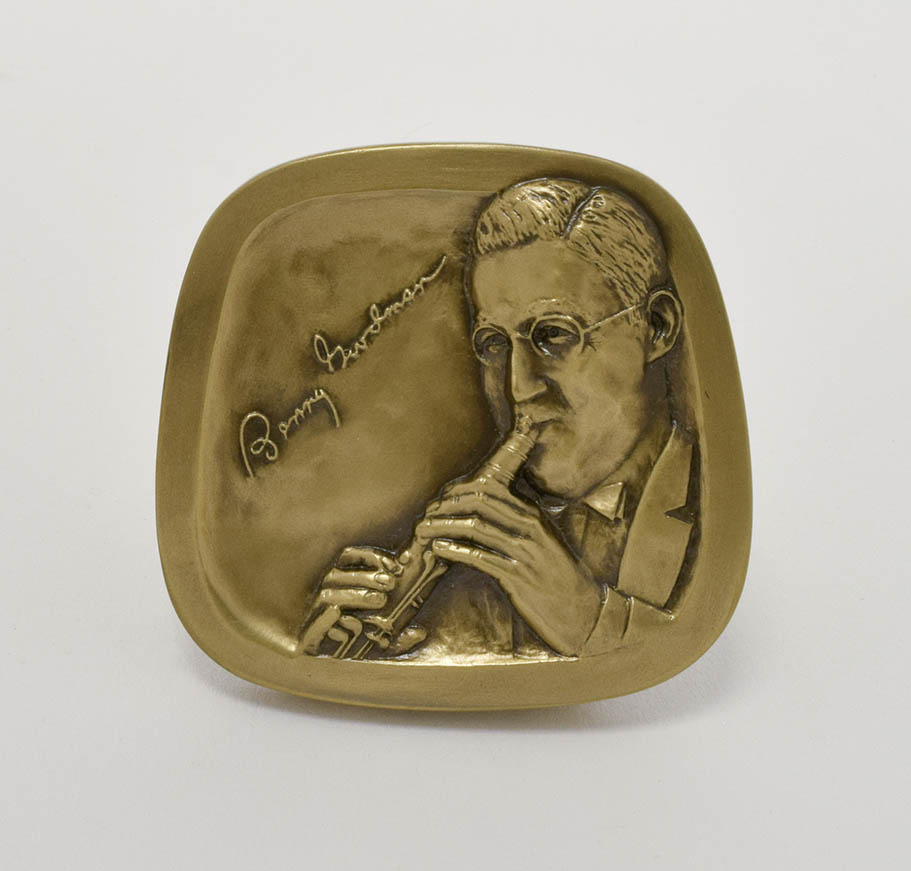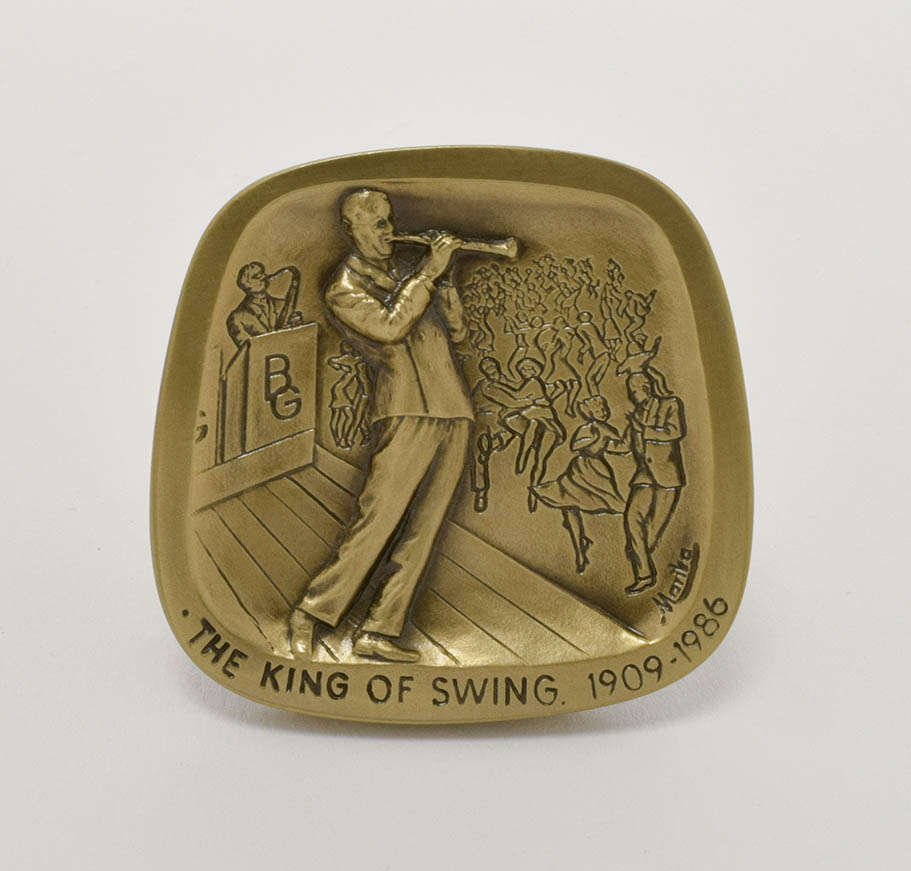Benny Goodman (1909–1966)
Marika Somogyi (b. Budapest, Hungary 1933)
USA, 1989
Bronze, h. 1 ¾ x w. 1 ¾ in.
Cincinnati Skirball Museum, Jewish-American Hall of Fame Collection, gift of Mel and Esther Wacks, Debra Wacks, and Shari Wacks, 2019.7.41
Benjamin David Goodman grew up in a tough Chicago neighborhood. His father took Benny and two brothers to a local synagogue, where they received musical instruments and lessons. Benny later studied with Franz Shoepp, a clarinetist in the Chicago Symphony. Goodman made history at the Palomar Ballroom in Los Angeles in 1935 when the crowd of jumping, cheering youngsters surrounded the bandstand during a swinging arrangement of Sugar Foot Stomp. The Swing Era was born! History was made again 1937 when more than 21,000 people jammed their way into the New York Paramount Theater to bounce in their seats and dance in the aisles to the Benny Goodman Band. His 1938 Carnegie Hall Jazz Concert has earned an honored place in America’s musical folklore. Less known is that the Benny Goodman Quartet included Teddy Wilson on piano and vibraphonist Lionel Hampton, making the first dent in the color barrier that had until then kept bands all white or all black. Hampton has said that “the Benny Goodman Quartet was the forerunner of getting Jackie Robinson into baseball.” Goodman was equally at home playing Mozart with the Boston Symphony or jamming at Harlem’s Savoy Ballroom. In 1962, when “The King of Swing” made a successful tour of the Soviet Union, one newspaper reporter quipped that “Khrushchev would trade three Sputniks for a Russian Benny Goodman!”


